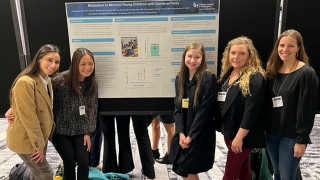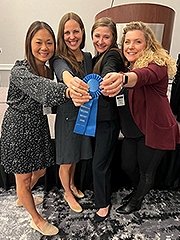CHOP Rehabilitation Experts Present Research, Including “Top Abstract,” at National Conference
Published on
Published on
 For children with motor impairments, physical therapy is an important intervention that can help improve function and independence. At the Academy of Pediatric Physical Therapy Annual Conference (APPTAC) this year, rehabilitation researchers from Children Hospital of Philadelphia (CHOP) presented six abstracts on measuring key “ingredients” for successful pediatric physical therapy, including one abstract that won the APPTAC “Top Abstract” award.
For children with motor impairments, physical therapy is an important intervention that can help improve function and independence. At the Academy of Pediatric Physical Therapy Annual Conference (APPTAC) this year, rehabilitation researchers from Children Hospital of Philadelphia (CHOP) presented six abstracts on measuring key “ingredients” for successful pediatric physical therapy, including one abstract that won the APPTAC “Top Abstract” award.
The research focused on six components of pediatric physical therapy:
 Motivation to Move: Skorup also presented an abstract measuring the motivation to move in young children with CP and the relationship between this motivation and the child’s motor ability. Studying 37 toddlers with CP who were 1-3 years of age, the researchers found that on average, the children with CP demonstrated motivation to move on par with that of 7-month-old infants with typical development and lower than reported in 12-month-old children with typical development. As expected, they found that toddlers with higher motor function were more motivated to move.
Motivation to Move: Skorup also presented an abstract measuring the motivation to move in young children with CP and the relationship between this motivation and the child’s motor ability. Studying 37 toddlers with CP who were 1-3 years of age, the researchers found that on average, the children with CP demonstrated motivation to move on par with that of 7-month-old infants with typical development and lower than reported in 12-month-old children with typical development. As expected, they found that toddlers with higher motor function were more motivated to move.Ultimately, the researchers hope to understand which components of motor practice – and how much of each – are related to better outcomes, so that in the future, physical therapists can maximize the benefit of therapy sessions for children with movement disorders.
Contact: Amanda DiPaolo Bradley, The Children’s Hospital of Philadelphia, or dipaoloa@chop.edu